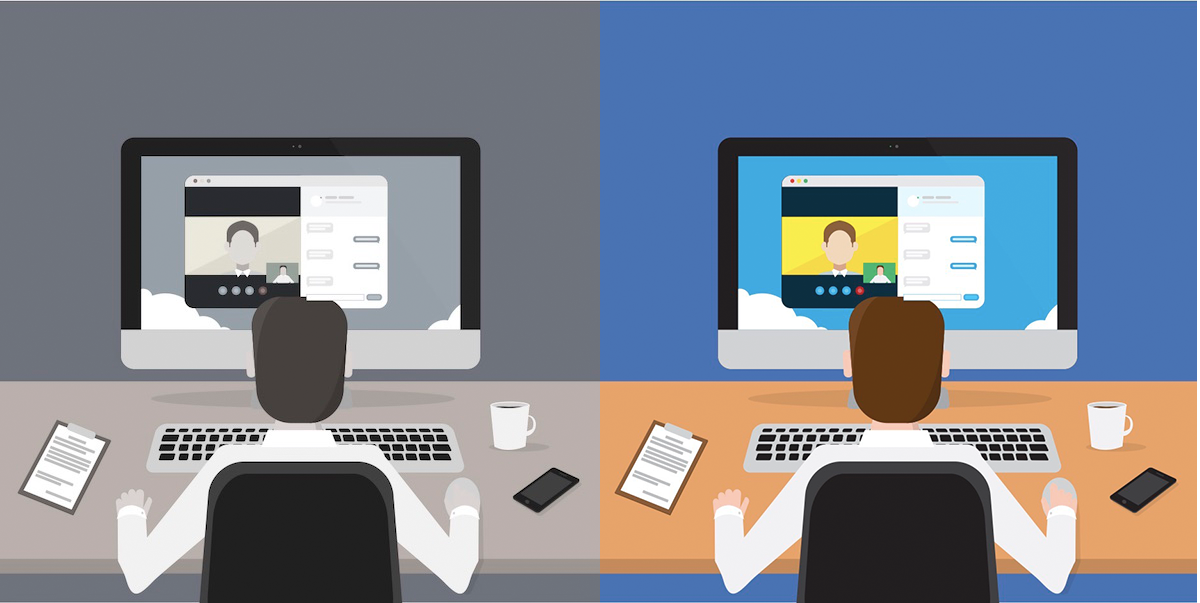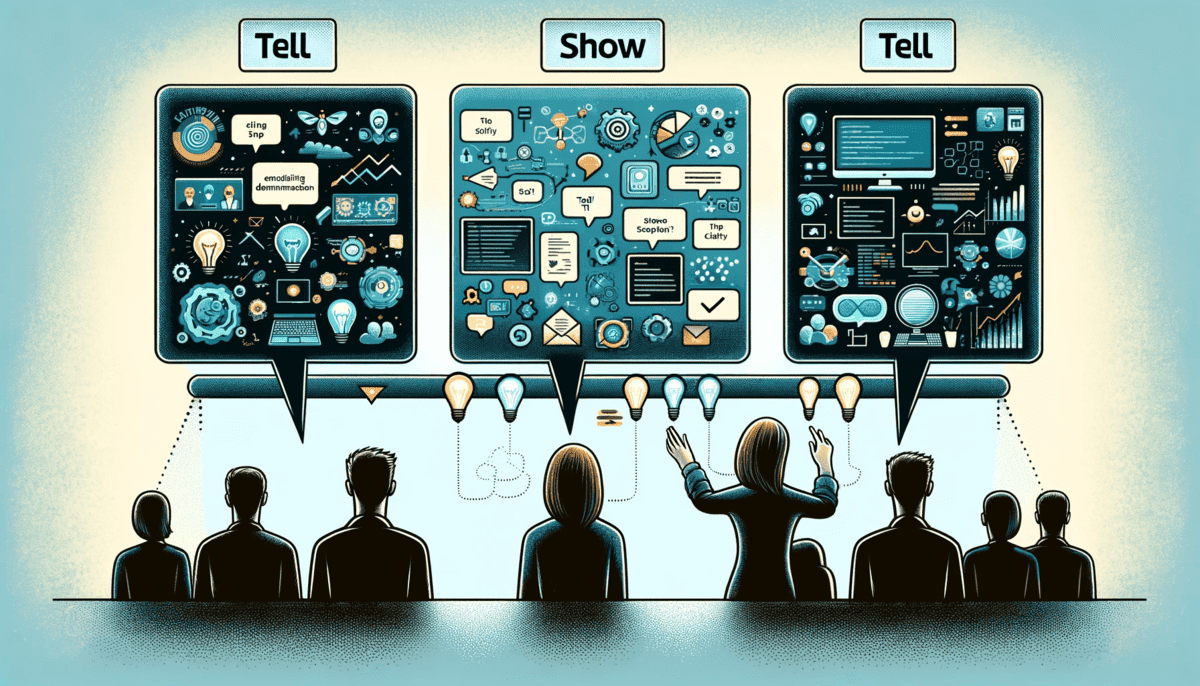Transforming a Good Demo into a Winning Demo
In-person demos have disappeared since the start of the COVID-19 pandemic. Pre-sales and Sales professionals are headlong in building bridges to...

Transforming a good demo into a great demo is key to driving your deals forward. Here are 9 tips to transform your demos.
2020 changed demo approaches, probably forever. It’s 4 years later and we’re still feeling the effects – virtual demos aren’t going anywhere. Pre-sales and Sales professionals are headlong in building bridges to customers using virtual platforms, but many of these virtual demos are missing some key components that will transform the event from a good demo to a winning demo. It is stating the obvious that in-person demo practices don’t all translate to virtual. That said, many professionals are executing virtual demos like they did in-person.

At 2Win, we’ve trained over 4,000 professionals with our Demo2Win course since the start of the 2020 pandemic. All of that training was virtual, as were the participant’s demos. The training has spanned six continents and over 40 countries. We asked our team of global facilitators “What is missing in the virtual demos you coach?”, and here are the results.
When a demonstrator performs an in-person demo and completes a topic, she or he will often look around the room, deliver the benefit, and ask the room if there are any questions. Physical cues direct the demonstrator to point to the individuals with questions and address their needs. In a virtual event, prospects don’t respond to “are there any questions?” Perhaps the individuals in the meeting aren’t forward with volunteering their questions. Maybe they don’t know if they should speak ahead of others. Regardless of their reasons, when this happens, you’re missing an opportunity to move from good to winning. Our facilitators coach presales and sales professionals to use people’s names. If you have five people in your virtual meeting, call on individuals by name, and ask them if they have any questions. For example, “Francis, do you have any questions?” If Francis answers “no,” our coaches suggest that you call on someone else. Then, ask the remainder of the virtual room for questions using people’s names. We also recommend that if no one in the meeting can think of a question right now, direct the meeting participants to “chat your questions as you think of them.”
Prospects want to know where this demo is going and where they are at any particular point in time. It is similar to driving directions. When most people enter their destination in their mobile mapping app and ask for driving directions, they want to see an overview of the route. While on the journey, they check to see where they in relation to the next turn or exit. The same is true for virtual demos. The anxiety and frustration of a virtual demo full of prospects rise when a demonstrator hasn’t presented a roadmap of where this demonstration is going. Our global sales coaches believe the effectiveness of a demo worsens when a software demonstrator is thirty minutes into the demo, and the prospect is lost in a flood of features and functions with no sense of where they are in the overall demo. If you want your virtual demo to move from good to winning, present a roadmap of your demo at the beginning of the event and revisit that map as you progress throughout.
It’s true. It can be weird to look at the camera lens when you’re in a virtual meeting or demo. But it matters! A lack of eye contact is another misstep working against you in your software demonstration. Go back to the days of in-person demos. If you have a room full of people and deliver the opening of your demo topic (the context of the topic), providing a final tell (the benefit), or simply interacting with the individuals in the room, you make eye contact. Our global coaches encourage their software demonstrators to harness the power of interpersonal communication in their virtual setting. Force yourself to look directly into the lens during these crucial interactions.
POWERFUL SLIDES CAN BE THE DIFFERENCE BETWEEN A GOOD DEMO AND A GREAT DEMO
Slides are integral to delivering a great demo and it’s crucial to recognize that whatever words or images you include need to be 50% larger than an in-person slide. The need for larger imagery is connected to the reduction in real estate that the viewers have on their screens as compared to a large projection screen. Many (but not all) virtual platforms let the users control their windows. If you are driving interactivity, the prospects need room for a chat window. If you elect to turn on your webcam while presenting a slide, that window gobbles up more real estate. Don’t make the eyes of your virtual audience strain to see your slides. Doing so will only invite diversion and multi-tasking away from your demo.
Focusing your prospect’s attention where you want transforms a demo that transmits information to a winning demo that compels someone to buy. For example, if you are using slides, use annotation tools to highlight key points as you address them. With the software, turn off your webcam and minimize every possible distraction. Our global facilitators coach their teams to go full screen with their solution and use tools like ZoomIt, Mousepose’ or a Logitech Spotlight to emphasize specific areas of the screen. Screen emphasis will drive their attention to exactly where you want, resulting in a more engaged and focused audience. And please, stop wiggling the mouse! If you tend to wiggle the mouse, break the habit by physically removing your hand from the mouse as you pause to discuss something on the screen.
Yes, our global sales coaches and facilitators want you to engage your audience by using your webcam and looking directly into the lens (think eye contact) when interacting with the audience. However, there are some simple rules to follow with webcams that will transform your demo from good to great
When you’re in front of an audience, they hear the subtleties of your voice. Your tones. Your intonation. Your pitch. There isn’t a built-in microphone on the market that can come close to replicating your natural voice. Our facilitators use high-fidelity microphones – whether USB or with an audio interface – to give the best sound on their virtual demonstrations. We realize you can’t control their speakers’ quality, but you can always make your best effort to improve your fidelity and that will help you build winning virtual demos.
A window? A light? A pile of dirty clothes? It’s also crucial to be purposeful about staging a home office setup, lighting, and background to present a professional setting. When you’re in-person, you’re in focus, well lit, and lack distractions behind you. Set up your home office to avoid windows and lights behind you and have good front-lighting with an uncluttered background.
Good demos aren’t good enough – if you want to make them great demos, contact us today.

In-person demos have disappeared since the start of the COVID-19 pandemic. Pre-sales and Sales professionals are headlong in building bridges to...

Tell-Show-Tell is one of the most powerful techniques a presenter can use in a software demo. This post is a conversation about Tell-Show-Tell...

In the dynamic landscape of sales and customer success, the role of demo presentations has evolved significantly. Today, businesses are realizing the...